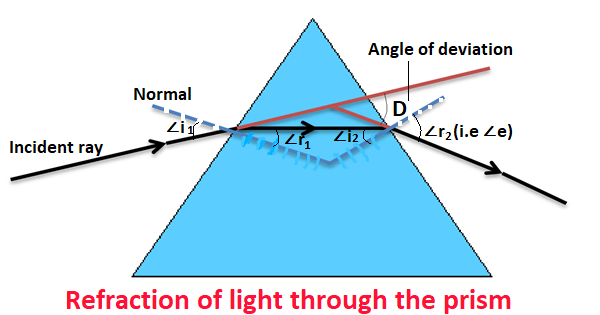Understanding the Refraction of Light Through a Prism
The natural phenomena of light have intrigued scientists and philosophers for centuries. One such phenomenon is the refraction of light through a prism. This topic holds immense importance in physics and optics, and in understanding how we perceive the world around us. Refraction of light through a prism, as it scatters into a stunning spectrum of colors, showcases a fundamental property of light and the basis for much of our optical technology today.
What is Refraction?
Refraction is the change in direction and speed of a wave due to a change in the medium through which the wave is passing. In the context of light, refraction occurs when light waves pass from one transparent medium to another, such as from air into glass or from glass into air.
Light travels at different speeds in different mediums. When it moves from a medium where it travels faster to a medium where it travels slower (like from air to glass), it bends towards the normal (an imaginary line perpendicular to the surface at the point of incidence). Conversely, when it moves from a medium where it travels slower to one where it travels faster (like from glass to air), it bends away from the normal. This bending is the essence of refraction.
The Prism and its Properties
A prism is a transparent optical object with flat, polished surfaces that refract light. The classic prism shape is a triangular prism, which has a base that is a triangle and three rectangular sides. The angles between these surfaces are what leads to the interesting effects of a prism on light.
Refraction of Light Through a Prism
When a beam of light hits the first face of a prism (assuming it is not perpendicular to it), it slows down and bends towards the normal due to the change in medium from air to glass. As this light beam exits from the second face of the prism, it speeds up again and bends away from the normal because it's moving from glass back into air. This combined bending of light causes the light beam to deviate from its original path.
One might expect that a beam of white light, when refracted through a prism, would merely shift direction while maintaining its white color. However, the unique property of "dispersion" in prisms complicates things and creates a beautiful result.
Dispersion of Light
Dispersion is the phenomenon in which the speed and the bending of light depend on its wavelength, or color. When white light, which contains all visible colors, enters a prism, the light is spread into a spectrum of colors known as a rainbow. This happens because each color within the white light is refracted, or bent, by a slightly different amount. Shorter wavelengths (like violet and blue) are bent the most, and longer wavelengths (like red and orange) are bent the least.
Read Also: A Math vs E Math: Differences, Tips & What You Need to Know
Conclusion
The refraction of light through a prism provides a mesmerizing example of the dual nature of light. On one hand, light behaves like a particle, streaming in straight lines. On the other, its wave-like properties are evident when it refracts and disperses into a spectrum of colors. The study of the refraction of light through a prism is not just fascinating, but it also forms a fundamental basis for our understanding of light and its interaction with the world.




Comments
Post a Comment